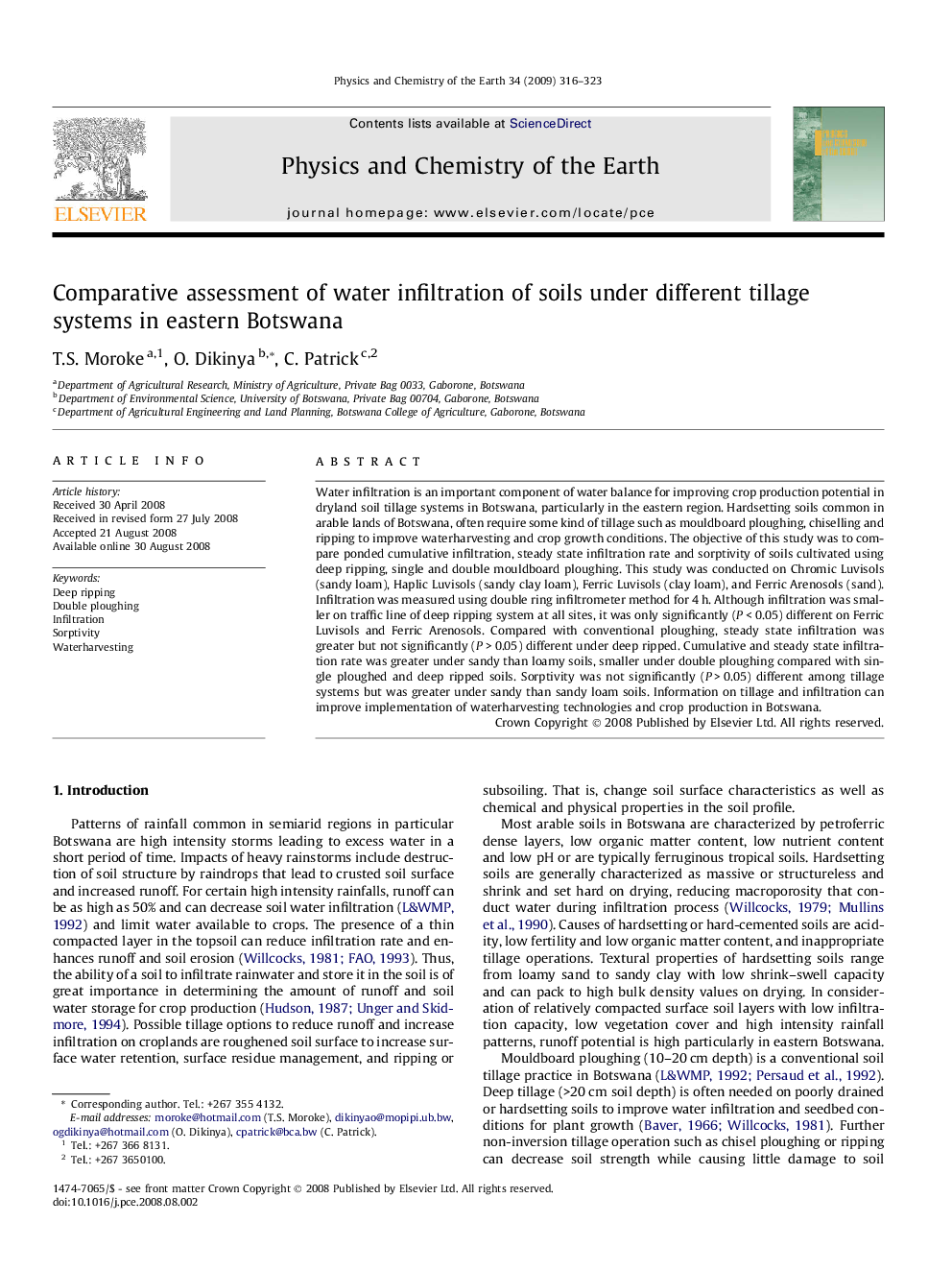| Article ID | Journal | Published Year | Pages | File Type |
|---|---|---|---|---|
| 4721571 | Physics and Chemistry of the Earth, Parts A/B/C | 2009 | 8 Pages |
Water infiltration is an important component of water balance for improving crop production potential in dryland soil tillage systems in Botswana, particularly in the eastern region. Hardsetting soils common in arable lands of Botswana, often require some kind of tillage such as mouldboard ploughing, chiselling and ripping to improve waterharvesting and crop growth conditions. The objective of this study was to compare ponded cumulative infiltration, steady state infiltration rate and sorptivity of soils cultivated using deep ripping, single and double mouldboard ploughing. This study was conducted on Chromic Luvisols (sandy loam), Haplic Luvisols (sandy clay loam), Ferric Luvisols (clay loam), and Ferric Arenosols (sand). Infiltration was measured using double ring infiltrometer method for 4 h. Although infiltration was smaller on traffic line of deep ripping system at all sites, it was only significantly (P < 0.05) different on Ferric Luvisols and Ferric Arenosols. Compared with conventional ploughing, steady state infiltration was greater but not significantly (P > 0.05) different under deep ripped. Cumulative and steady state infiltration rate was greater under sandy than loamy soils, smaller under double ploughing compared with single ploughed and deep ripped soils. Sorptivity was not significantly (P > 0.05) different among tillage systems but was greater under sandy than sandy loam soils. Information on tillage and infiltration can improve implementation of waterharvesting technologies and crop production in Botswana.
